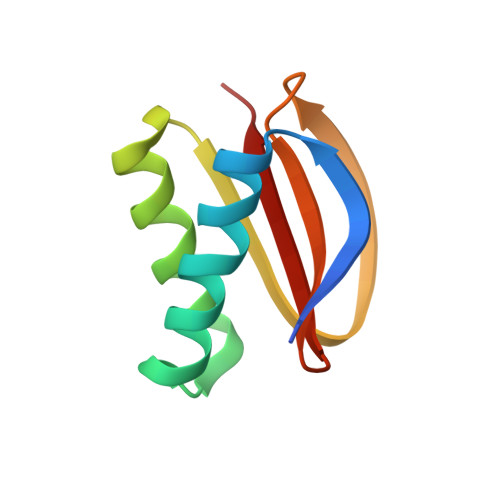Multivalency in the assembly of intrinsically disordered Dynein intermediate chain.
Hall, J., Karplus, P.A., Barbar, E.(2009) J Biological Chem 284: 33115-33121
- PubMed: 19759397
- DOI: https://doi.org/10.1074/jbc.M109.048587
- Primary Citation of Related Structures:
3FM7, 3GLW - PubMed Abstract:
Dynein light chains are thought to increase binding efficiency of dynein intermediate chain to both dynein heavy chain and dynactin, but their exact role is not clear. Isothermal titration calorimetry and x-ray crystallography reported herein indicate that multivalency effects underlie efficient dynein assembly and regulation. For a ternary complex of a 60-amino acid segment of dynein intermediate chain (IC) bound to two homodimeric dynein light chains Tctex1 and LC8, there is a 50-fold affinity enhancement for the second light chain binding. For a designed IC construct containing two LC8 sites, observed the 1000-fold enhancement reflects a remarkably pure entropic chelate effect of a magnitude commensurate with theoretical predictions. The lower enhancement in wild-type IC is attributed to unfavorable free energy changes associated with incremental interactions of IC with Tctex1. Our results show assembled dynein IC as an elongated, flexible polybivalent duplex, and suggest that polybivalency is an important general mechanism for constructing stable yet reversible and functionally versatile complexes.
- Department of Biochemistry and Biophysics, Oregon State University, Corvallis, Oregon 97331, USA.
Organizational Affiliation:


















